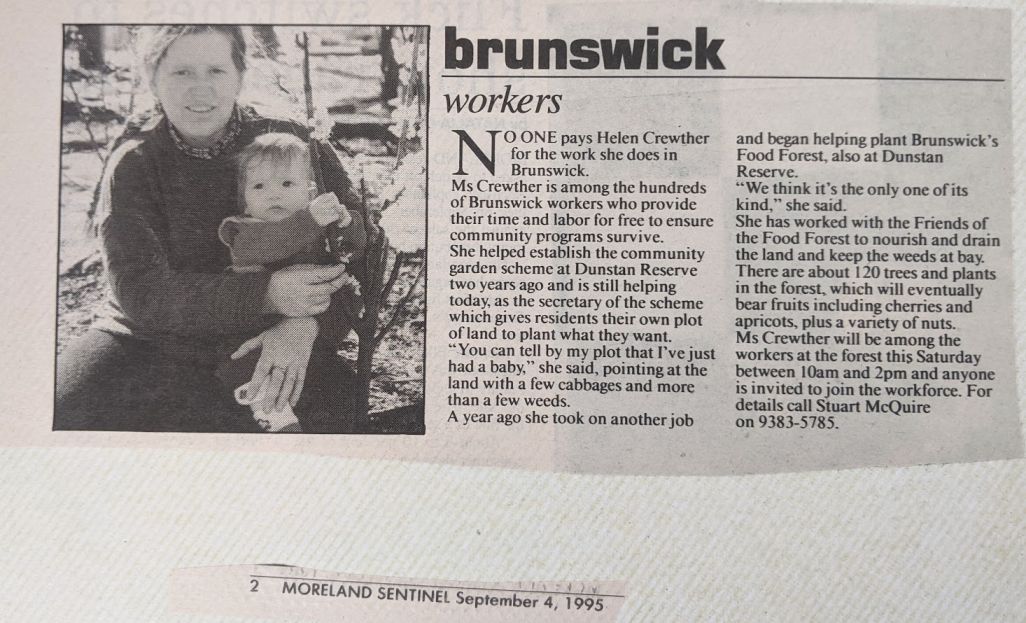By around 2010, the Friends of the Food Forest had disbanded and the site was not being maintained in any kind of formal way beyond mowing by Council. At the same time, a small group of local residents were searching for a site to start a community garden in Merri-bek. One of the members, Paul Desmond, bumped into Stuart McQuire at the Food Forest and, after learning about its history, proposed that the group investigate taking on responsibility for the site. Not long after this, Moreland City Council’s (now Merri-bek City Council) Seeding Grants became available, and so the group became incorporated as Coburg Community Gardening (later changed to Moreland Community Gardening and then Merri-bek Community Gardening) and successfully applied for a $3,000 grant to rejuvenate the site.
The Seeding Grant agreement established a clear set of goals for the Food Forest. The aim was to make to make the site:
- a source of healthy, organic food
- a well-maintained, productive plantation of trees
- a pleasant place for local residents to visit
- an outdoor classroom and exhibition garden
- a social hub
With the grant money, Coburg Community Gardening was able to buy insurance, carry out additional planting, improve the soil, purchase materials, organise water access, increase publicity and carry out workshops and events.


